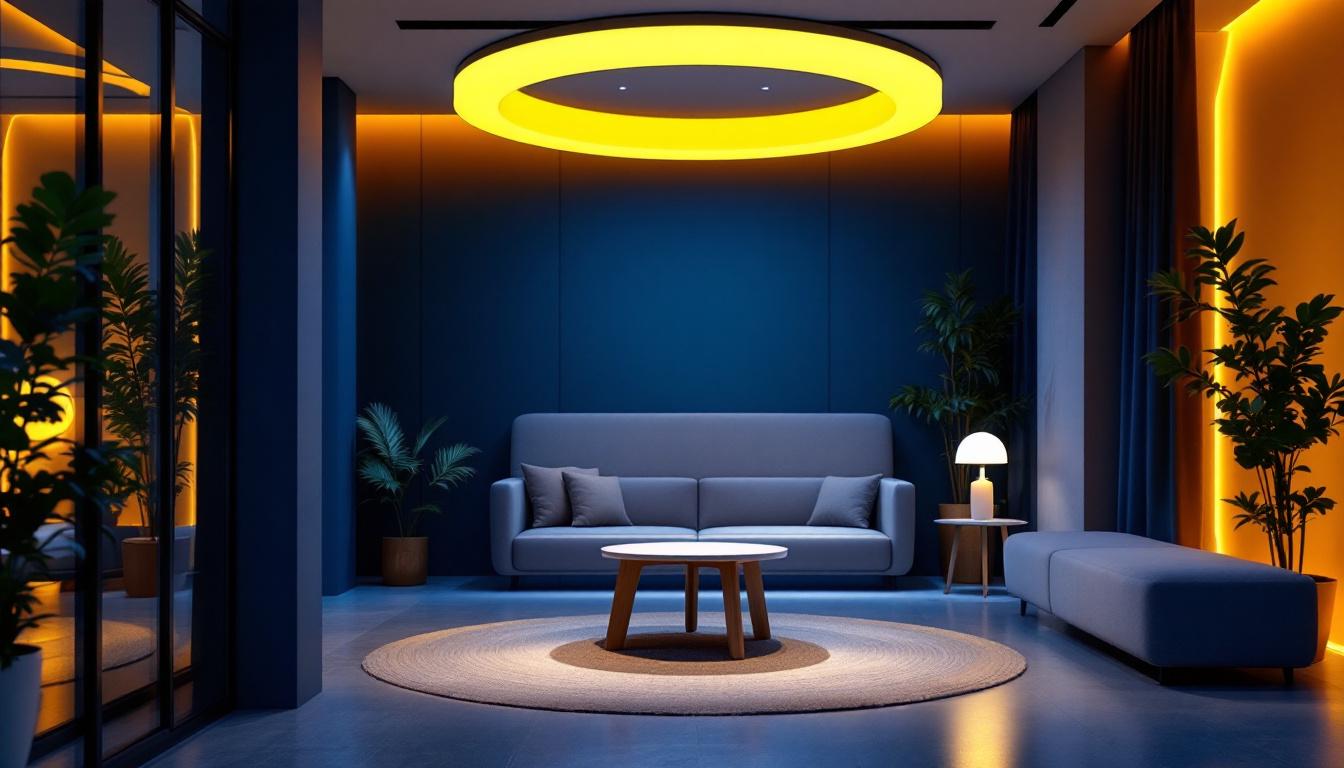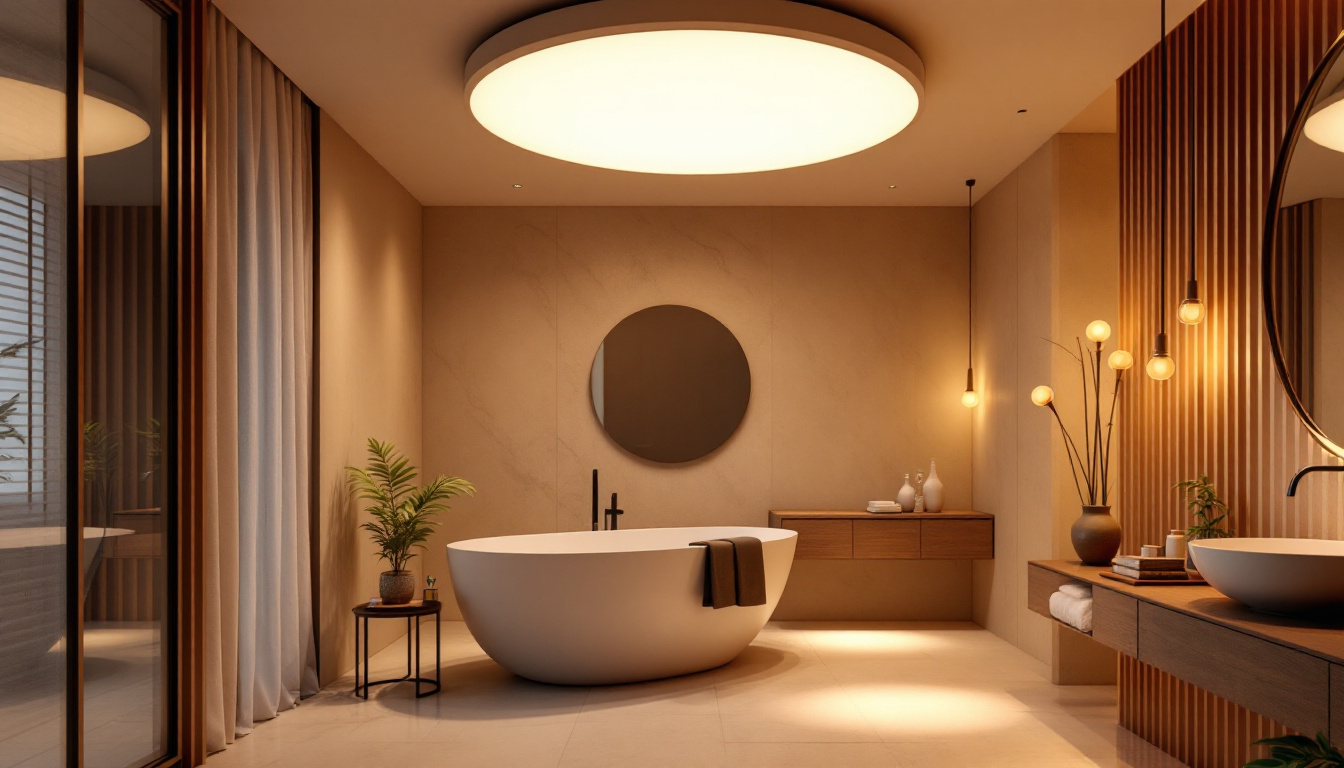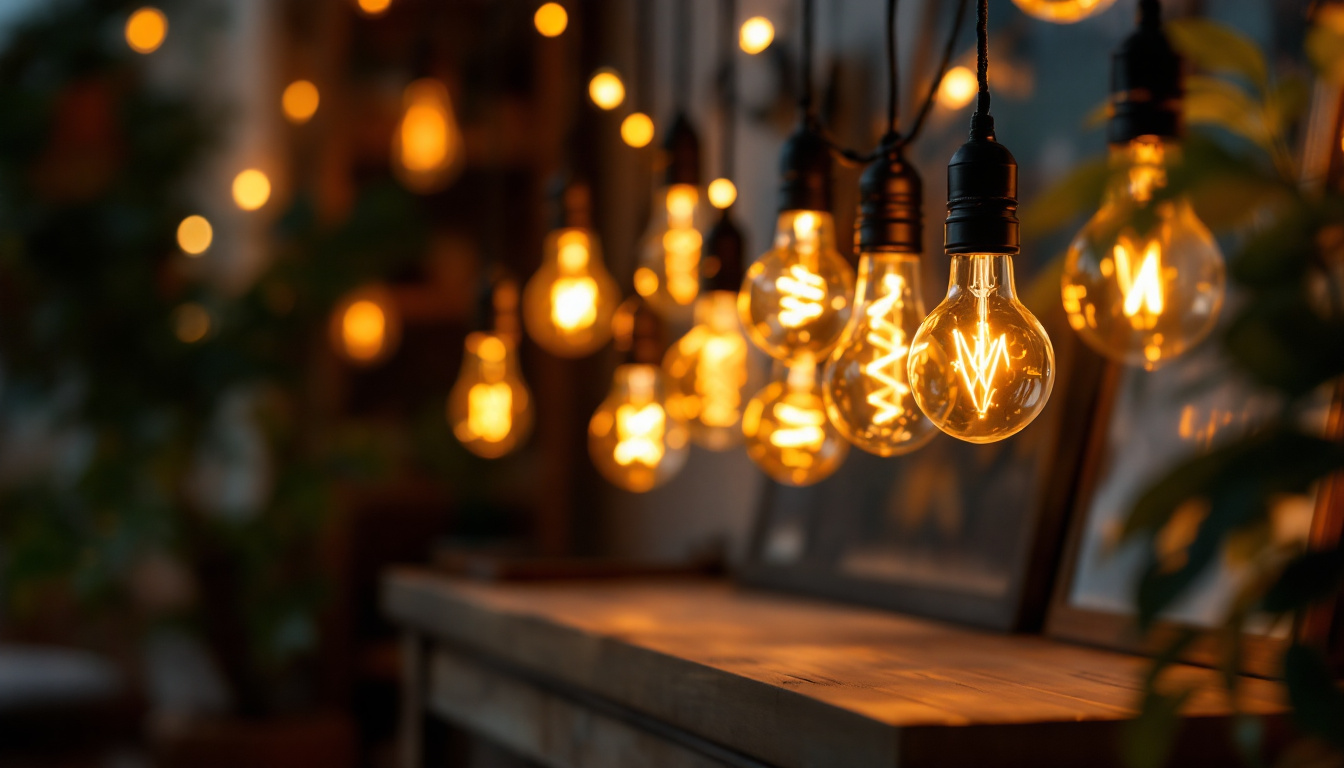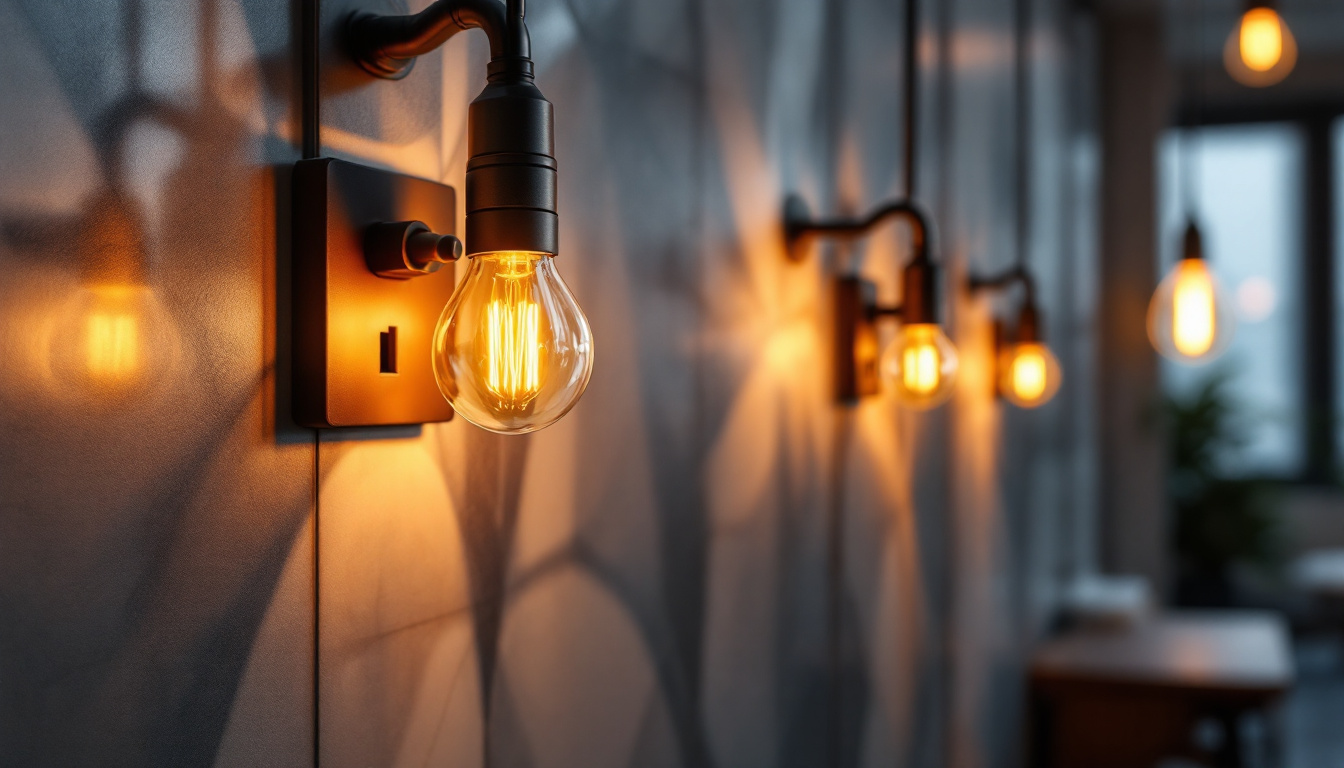
In the ever-evolving world of lighting solutions, LED lamps have emerged as a game-changer. For lighting contractors, understanding the various types of LED lamps is not just beneficial; it’s essential. As the demand for energy-efficient and versatile lighting solutions continues to rise, knowing the ins and outs of LED technology can set contractors apart from the competition. This article delves into the different types of LED lamps available, their applications, and why they are crucial for every lighting contractor.
Before diving into the various types of LED lamps, it’s essential to grasp the fundamental technology behind LEDs. Light Emitting Diodes (LEDs) are semiconductor devices that emit light when an electric current passes through them. This technology offers numerous advantages over traditional lighting solutions, including energy efficiency, longevity, and low heat output. The simplicity of their design and the materials used in their construction also contribute to their remarkable performance and reliability, making them a preferred choice in modern lighting applications.
LEDs convert a higher percentage of energy into light rather than heat, making them more efficient than incandescent or fluorescent bulbs. This efficiency translates into lower energy bills for clients and a reduced carbon footprint, aligning with the growing emphasis on sustainability in construction and renovation projects. Additionally, the environmental impact of LEDs is further minimized by their lack of toxic substances, such as mercury, which is commonly found in fluorescent lighting. This aspect not only enhances safety during disposal but also supports a cleaner environment.
One of the most compelling reasons for contractors to advocate for LED lamps is their energy efficiency. LEDs use up to 80% less energy than traditional bulbs, significantly reducing electricity costs over time. This efficiency not only benefits clients financially but also enhances the contractor’s reputation as a provider of sustainable solutions. Furthermore, many utility companies offer rebates and incentives for switching to LED lighting, providing an additional financial advantage that can be passed on to clients, making the transition even more appealing.
Moreover, LED lamps boast an impressive lifespan, often lasting 25,000 hours or more. This durability means fewer replacements and less maintenance, which is a significant selling point for contractors looking to establish long-term relationships with clients. The extended lifespan of LEDs also means that they contribute to less waste in landfills compared to traditional bulbs, reinforcing the importance of sustainable practices in the construction industry. By choosing LEDs, contractors can position themselves as leaders in eco-friendly building solutions, appealing to a growing demographic of environmentally conscious consumers.
LED technology has advanced to a point where it can be adapted to various lighting styles and applications. From residential settings to commercial spaces, LEDs can be designed to fit any aesthetic or functional need. This versatility allows contractors to offer tailored solutions that meet the specific requirements of each project. With the ability to produce a wide range of colors and intensities, LEDs can create dynamic lighting environments that enhance mood and functionality, whether in a cozy home or a bustling office.
Whether it’s recessed lighting, track lighting, or decorative fixtures, understanding the range of LED options available enables contractors to provide innovative and attractive lighting designs that enhance the overall ambiance of a space. Additionally, advancements in smart LED technology allow for integration with home automation systems, giving clients the ability to control their lighting remotely and customize their environments to suit their preferences. This level of adaptability not only meets the demands of modern living but also opens up new avenues for contractors to explore in their designs, ensuring they remain competitive in an ever-evolving market.
With a solid understanding of LED technology, it’s time to explore the different types of LED lamps that contractors should be familiar with. Each type has its unique characteristics and applications, making it crucial for contractors to know when and where to use them.
LED A-lamps are designed to replace traditional incandescent bulbs. They come in various wattages and are suitable for a wide range of applications, including residential and commercial lighting. Their familiar shape makes them an easy choice for clients looking to upgrade their existing fixtures without a complete redesign.
These lamps provide excellent light quality and are available in different color temperatures, allowing contractors to create the desired ambiance in any space. Their energy efficiency and long lifespan also make them an attractive option for clients seeking to reduce their energy consumption.
LED flood lights are ideal for outdoor applications, providing bright, wide-angle illumination. They are commonly used for security lighting, landscape lighting, and architectural highlights. The high lumen output of LED flood lights ensures that large areas are well-lit, enhancing safety and visibility.
Contractors can recommend LED flood lights for both residential and commercial projects, as they are available in various wattages and designs. Additionally, many models are equipped with motion sensors and dimming capabilities, adding further versatility to their application.
LED downlights, also known as recessed lights, are popular in modern interior design. They provide a sleek and unobtrusive lighting solution that can be used for general, task, or accent lighting. Their ability to be installed in ceilings or walls makes them a favorite among contractors working on both new builds and renovations.
These lamps are available in various sizes and finishes, allowing for customization to match the aesthetic of any space. Furthermore, LED downlights often come with adjustable color temperatures, enabling contractors to create the perfect lighting environment for their clients.
In addition to the standard types of LED lamps, there are several specialty options that contractors should be aware of. These lamps cater to specific needs and can enhance the overall functionality of lighting systems.
LED tube lights are a direct replacement for traditional fluorescent tubes. They are commonly used in commercial settings, such as offices, warehouses, and retail spaces. The advantages of LED tube lights include increased energy efficiency, longer lifespan, and reduced flickering, which can be a common issue with fluorescent lighting.
Contractors can recommend LED tube lights for retrofitting existing fixtures or for new installations. They are available in various lengths and color temperatures, providing flexibility in design and application.
LED high bay lights are designed for high-ceiling applications, such as warehouses, gymnasiums, and manufacturing facilities. These lamps provide powerful illumination and are engineered to deliver optimal light distribution in large spaces.
With their energy efficiency and long lifespan, LED high bay lights are an excellent choice for contractors looking to provide cost-effective solutions for clients with expansive areas that require bright, reliable lighting.
As technology continues to advance, smart LED lamps have gained popularity among homeowners and businesses alike. These lamps can be controlled remotely via smartphones or smart home systems, allowing users to adjust brightness, color, and scheduling with ease.
Contractors who offer smart lighting solutions can provide clients with enhanced convenience and energy savings. Understanding the various smart LED options available can help contractors stay ahead in a competitive market.
Understanding the different types of LED lamps is essential, but it’s equally important to recognize the broader benefits of integrating LED technology into lighting projects. These advantages can significantly impact a contractor’s success and client satisfaction.
One of the most significant benefits of LED lamps is the cost savings they offer. While the initial investment may be higher than traditional lighting options, the long-term savings on energy bills and maintenance costs make LEDs a financially sound choice. Clients will appreciate the reduced operating costs, and contractors can leverage this advantage in their proposals.
Additionally, many regions offer incentives or rebates for energy-efficient lighting upgrades, further reducing the financial burden on clients and making LED solutions more attractive.
As sustainability becomes a priority for many businesses and homeowners, the environmental benefits of LED lighting cannot be overlooked. LEDs consume less energy, which translates to lower greenhouse gas emissions. Furthermore, they do not contain harmful substances like mercury, making them a safer choice for the environment.
Contractors who prioritize eco-friendly solutions can appeal to a growing market of environmentally conscious clients. By promoting LED technology, contractors can position themselves as leaders in sustainable lighting practices.
LED lamps offer superior lighting quality compared to traditional options. They provide consistent color rendering, which is crucial for tasks that require accurate color perception, such as in art studios or retail environments. Additionally, LEDs can be designed to minimize glare and provide uniform illumination, enhancing the overall aesthetics of a space.
By understanding and utilizing the various types of LED lamps, contractors can deliver high-quality lighting solutions that meet the diverse needs of their clients.
In the competitive landscape of lighting contracting, knowledge is power. Understanding the various types of LED lamps and their applications is essential for contractors looking to provide innovative, energy-efficient, and sustainable lighting solutions. From A-lamps to smart lighting, each type of LED lamp offers unique benefits that can enhance a contractor’s portfolio and satisfy client needs.
As the demand for LED technology continues to grow, staying informed about the latest advancements and trends in the industry will enable contractors to remain competitive. By embracing LED lamps and promoting their advantages, lighting contractors can not only improve their business but also contribute to a more sustainable future.
Ready to elevate your lighting game and deliver outstanding results to your clients? Look no further than LumenWholesale for all your LED lamp needs. Our extensive selection of spec-grade lighting products is designed to meet the highest industry standards, ensuring you provide top-quality, energy-efficient, and sustainable solutions. With unbeatable wholesale prices and the convenience of free shipping on bulk orders, LumenWholesale is your go-to source for premium lighting without the premium price tag. Discover the best value in wholesale lighting and make your next project shine with LumenWholesale.

Discover how LED UFO lighting can revolutionize your projects with energy efficiency and cutting-edge design.

Discover how LED bathroom ceiling lights can transform your space with innovative lighting designs.

Discover the essential facts about bulb decoration lights from the perspective of lighting contractors.

Explore how wire plug connectors are revolutionizing lighting design and installation with their ease of use, safety features, and adaptability.